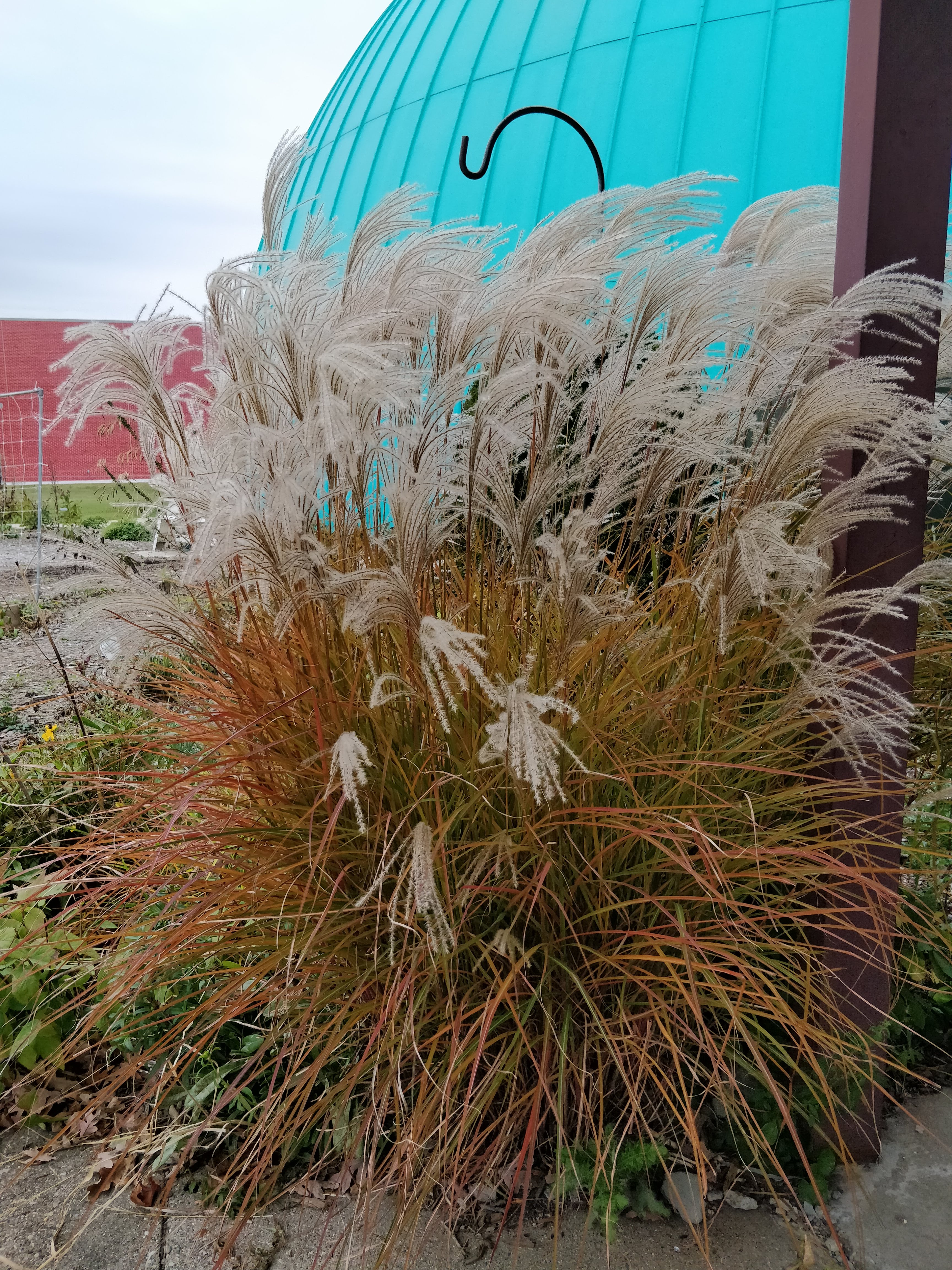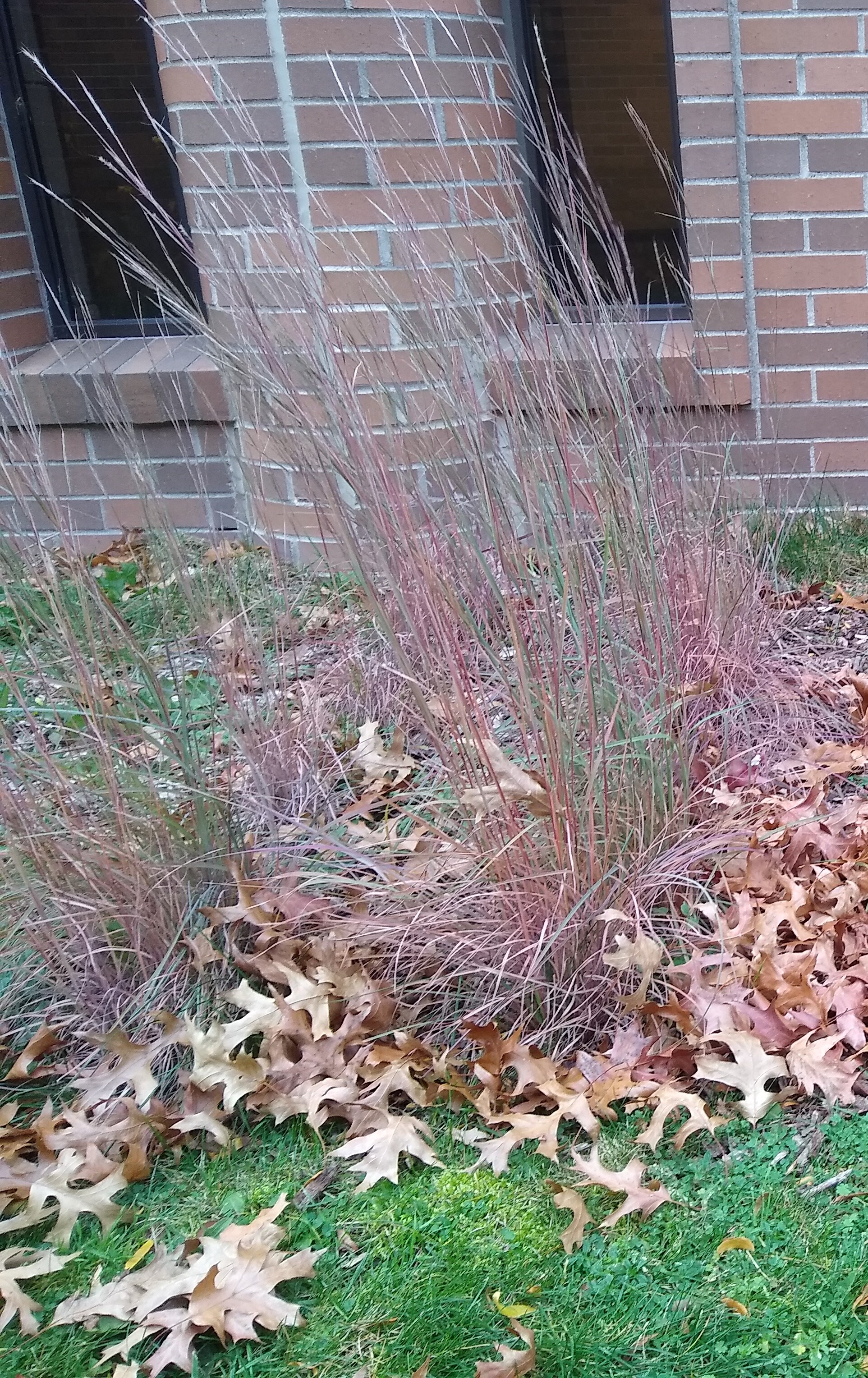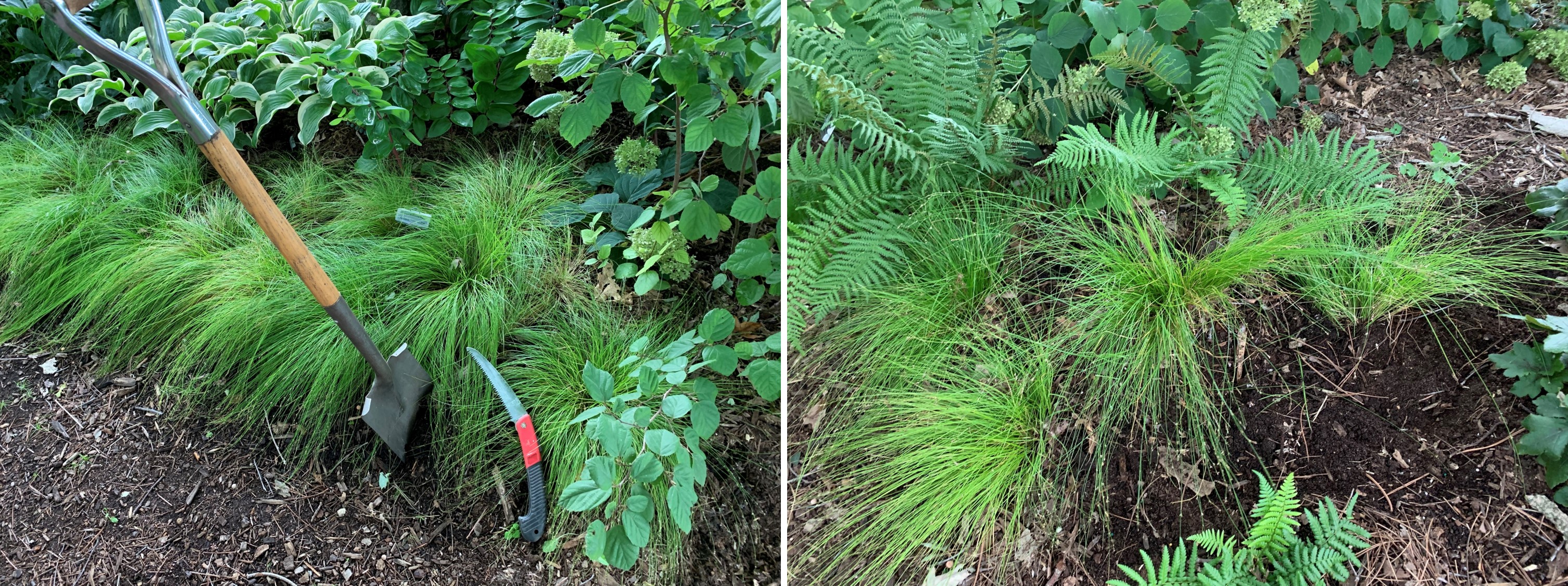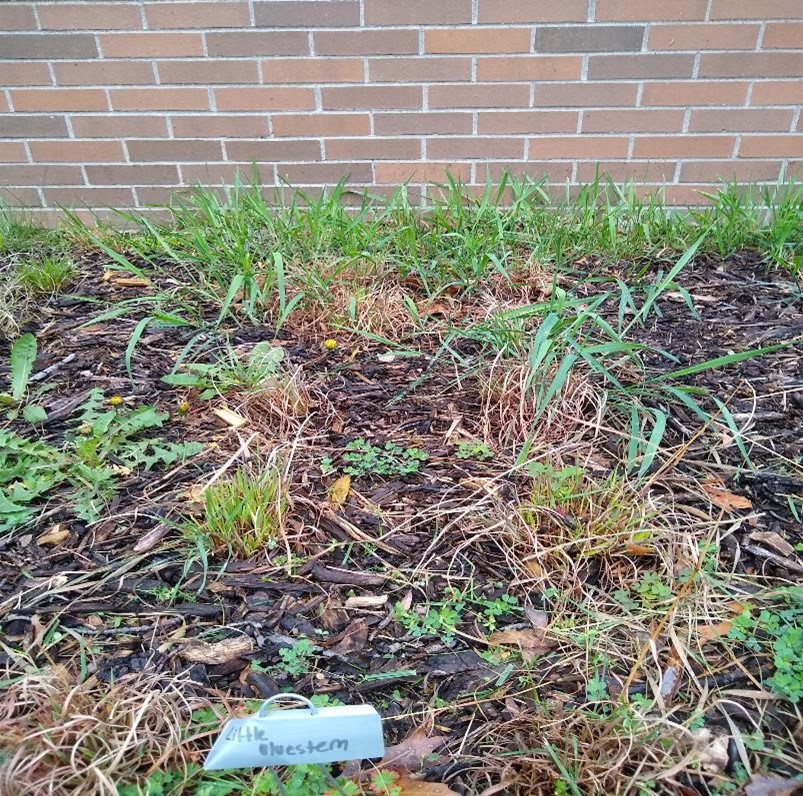Maintaining a grasses and sedges garden
Keeping your turf alternative garden alive for the next season.

The aesthetic and environmental value of ornamental grass and sedge gardens was described in the Michigan State University Extension article, “Starting a grasses and sedges garden.” This article will cover several strategies to keep your garden productive during the dormant season and ready for the following season. Under most conditions, ornamental grasses and sedges are tolerant of your USDA plant hardiness zone in Michigan. Many are especially accommodating to problem areas of the landscape that remain moist through the season or that become very dry. Well established plants should return and flourish in the following season after planting (Photo 1).
Cutting plants
Most ornamental grasses and sedges should be trimmed to the ground between February – March. While the plants will remain brown during the winter, some plants retain their seedheads (Photo 2), dried flowers or fall colors (Photo 3), creating a desirable appearance to some gardeners. Removing the previous season’s growth could be done as early as November, but this may damage the winter habitats of skipper moths that spend the winter as pupae just below the soil surface. Trimming ornamental grasses to the ground any earlier in the fall would increase the risk of winter injury to plants that attempt to grow prior to dormancy and increases the chances that broken grass leaves and stems will blow around the landscape.

Plants should be cut close to the ground, not leaving stubs taller than an inch or two, using a hand shears, hand saw or hedge trimmer. This will keep the center of the clump healthy and allow early spring sunlight to invigorate the clump. Weed whackers are not recommended due to the possibility of grassy plants getting tangled in the trimmer head.

Native grasses are adapted to tolerate burning. This is not recommended in most small, residential gardens. As grasses can burn easily, gardeners living in spots with higher risk of wildfires should be aware of the possibility that windborne embers could ignite dry grasses. If you do choose to burn isolated clumps of grass, check local regulations for burning before doing so with a torch.
Dividing plants
Each season, perennial plants including grasses will grow outward from the center. If the center of the plant appears dead, or the entire plant seems unthrifty, this might be a sign that you should divide them. Dividing is optional unless you want to slow down the rate of spread or growth is poor in the existing spot. Spring or Fall are the optimal times for plant division. Use clean tools that have been sanitized. Most divisions are made by lifting the entire plant and slicing or pulling it apart into sections (Photo 4). This can be done with a sharp spade or fork, hand saw or knife. Cuts are made through the crown and replanted sections require supplemental watering in the first few weeks if conditions are dry.

Fertilizer use in turf alternative gardens
Depending on your soil type, fertilizer is often unnecessary in ornamental grass and sedge gardens. In parts of Michigan, poor soils may warrant fertilizer applications, generally once in the spring. Using an organic mulch such as composted leaves will enable quick establishment. Plants grow poorly when they are not adapted to the soil conditions or drainage. In fact, excessive watering, fertilizing or rainfall can lead to droopy or flopping grasses, especially on taller species such as switchgrass and little bluestem. When plants begin to droop, they can be held together with a circular metal stake.
If you have selected a grass that is native to the region, its deep root system is a bonus that will hold water in dry conditions and reduce water runoff after heavy rainfall. Testing your garden soil prior to planting or every few years will help determine if soil amendments are needed.
Spring weeding
Competition with weeds is most noticeable as plants begin to emerge in the spring (Photo 5). Weekly mechanical removal of winter annuals and other weeds is often sufficient after the garden is fully established. As the ornamental grasses mature during the season, they will fill in the areas between rows and block out sun from weeds. Mulching between rows will also reduce weed emergence but does not guarantee weeds cannot grow.

Herbicides are rarely needed in an established grass and sedge garden. If you decide that an herbicide application is required to control weeds, you must follow instructions that are included on the label. Additionally, it must be a product that is specific to broadleaf weeds with an active ingredient such as triclopyr or 2-4-D. Any herbicide that targets monocots or grasses or a non-selective herbicide containing an active ingredient such as glyphosate will kill ornamental grasses and sedges.



 Print
Print Email
Email



